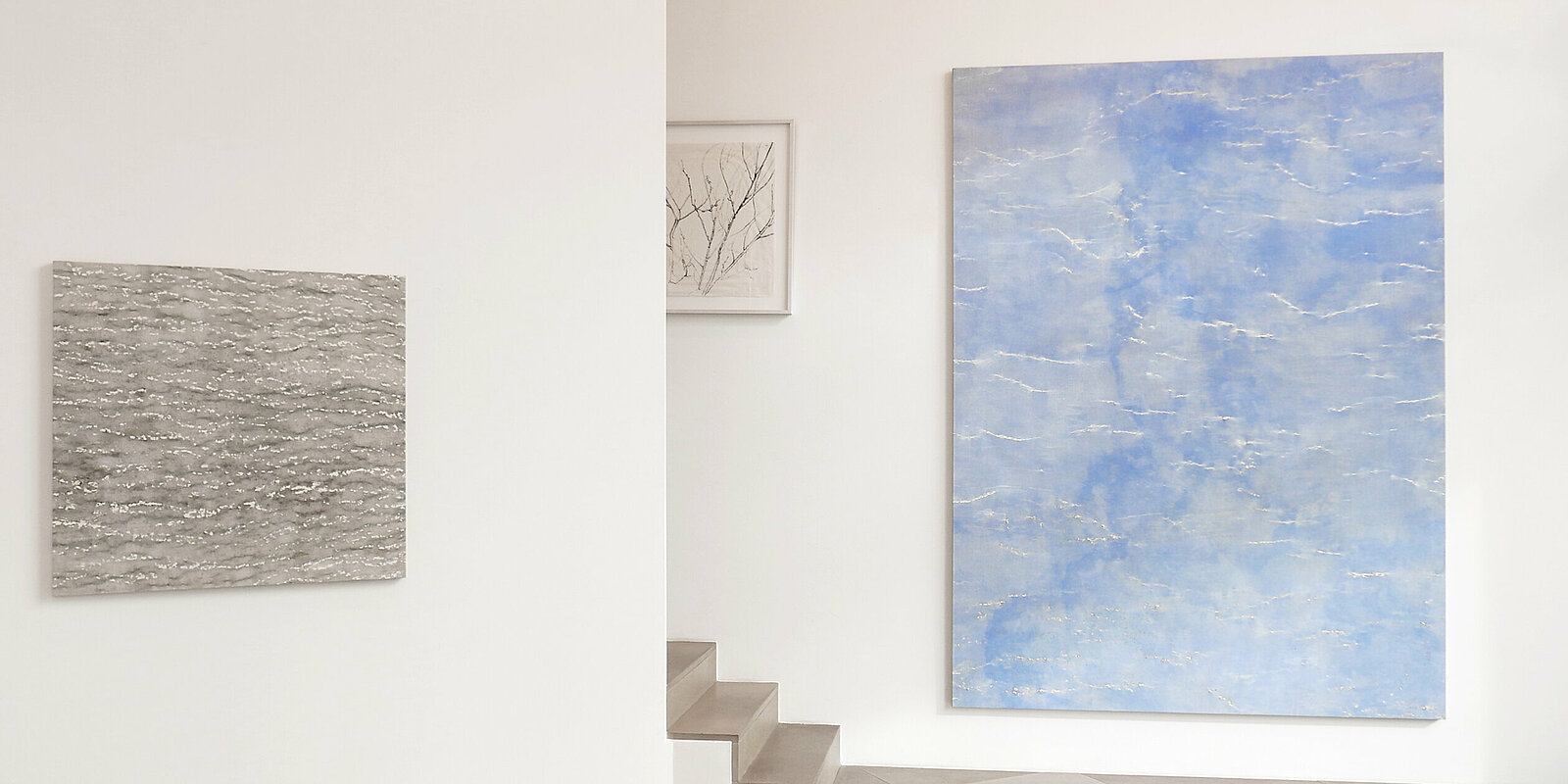Kathleen Jacobs: Kathleen Jacobs - Drift

Galerie Karsten Greve AG, St. Moritz
Lundi - samedi 10 - 13 h / 14 - 18.30 h
Vernissage le samedi 18 février 2023, de 17 à 19h
Galerie Karsten Greve AG is delighted to present DRIFT, a first exhibition dedicated to the work of the American artist Kathleen Jacobs. On display will be 26 works on canvas created between 2015 and 2022 and 10 works on paper between 1995 and 2012.
Kathleen Jacobs seeks inspiration in nature. Her work starts among the trees, onto which she attaches blank canvases. While in direct contact with the bark, she leaves the canvases at the mercy of nature for up to three years, exposed to the elements. She waits as wind, rain and sun leave their imprint on the surface, re-wraps them onto different trees, and finally removes the canvas to soak in water and stretch onto bars – the surface is now ready for her intervention.
Called frottage, her technique is not unlike woodblock printing she learned from the Japanese-American artist Hiroki Morinoue after returning to the United States from China in the early 1990s. Printing and rubbings (such as gravestone rubbings), are at the origin of her idea, and she came to the idea of using the tree’s surface directly rather than copying it – this being the essence of her approach.
Often, she rotates the canvas so the lines become horizontal, and thus tethers into the realm of abstraction as she removes the direct association with a tree silhouette. As she meticulously applies layer after layer of paint, hidden patterns from the long exposure outside emerge. While she stays true to a monochromatic palette of muted blues and greyish whites, she subtly incorporates brighter or darker hues to enhance the details and create depth. While detached from the source, these patterns of lines imprinted by the bark remind Kathleen Jacobs of many natural phenomena – “I realized that the lines and patterns of the bark were very similar to forms found in nature. Clouds in the sky, waves in the ocean, flowing rivers…”. In symbiosis with nature, her works reflect the infinity of space, invisible to the eye but felt through the soul, and she said about her work herself that “the reason I like abstract works without reference is that it gives you something to think about.”
However, as much as the source is important, the works aren’t about trees or nature, they don’t have a reference and strive to inspire the viewer to set his own imagination free. In a way, the titles Jacobs gives to her works reflect this idea. The five lettered combinations are in fact fixes (meaning geographical coordinates), but do not bear any particular significance apart from a geographical one, such as a coordination point in the universe, used to mark crossings in the sky; an intersection of routes: “my work is born from the collaboration between the trees, the natural environment, and myself, but it’s not about trees; they are abstract paintings. The lines and patterns are important, nothing more, nothing less.”
Reminiscent of Dansaekhwa, an informal Korean art-movement which began in the 1970s with its signature tactility, monochromeness and awareness of materials, her paintings also reveal the urgency of method, of process, of touch and texture. Critics referred to Dansaekhwa as “methods of drawing,” “methods of spreading,” “methods of bleeding,” “methods of spilling,” and “methods of pushing” as well as “methods of painting”. The marks communicate solely about a presence – that of the tree, of the artist and on the onlooker.
Small sized watercolours and ink pieces reveal more figurative works on paper, and echo the time Jacobs spent in China. She was first introduced to the ancient art of calligraphy by the painter Huang Yongyu (recognized as National Living Treasure in China, still alive at the age of 99) – where she learned to use her whole body to move the brush, being intentional and present at all moments. “The calligraphy practice helps me warm up before painting,” she says. From China, Jacobs also learned about the sense of space, especially from the Tang, Song and Ming dynasties landscapes distinguished by the presence of consecutive blank spaces and the absence of the horizon. Her perception of perspective is shaped in great part by her activity as an aerobatic pilot, giving her a point of focus in space. During that time, Jacobs was also introduced to the Dao and its principles, as well as simplicity and selflessness in conformity with the Dao, leading a life of non-purposive action and expressing the essence of spontaneity and constant transformation.
Kathleen Jacobs thus grounds the works in the present moment and simultaneously erases all references to reality and calls the imagination to fly freely, enveloping and soothing by its aesthetics.


